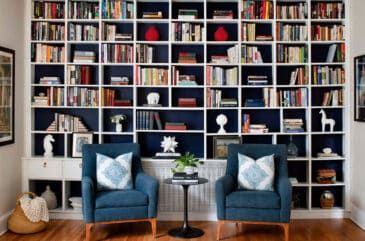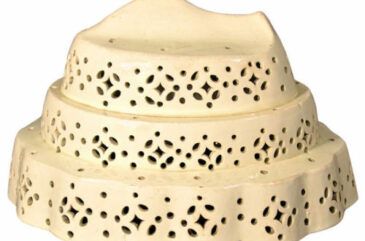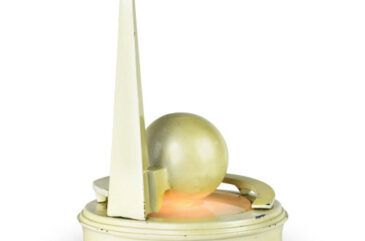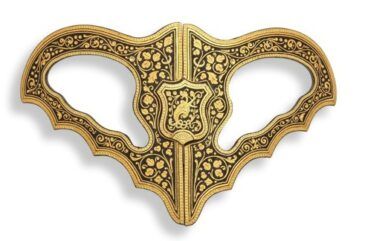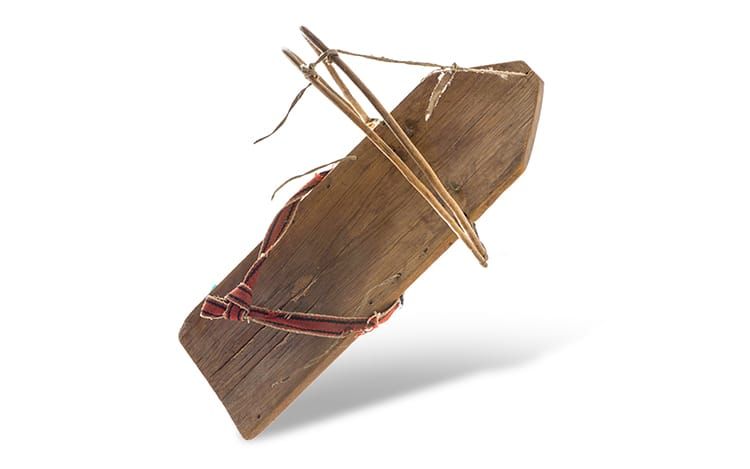
At 1stdibs we’re constantly seeing beautiful and historically valuable examples of art and design. We can even admit to getting a little jaded at times. Even so, we still always seem to stumble on some scrap of cultural ephemera or some odd relic of a bygone era that intrigues us, baffles us and proves that we haven’t seen it all. To wit, we present Mystery Objects, in which we do a bit of digging to discover the intended purpose of an item — when it isn’t clear from just looking at it.
See above for an example of a piece that had us guessing. Antique weaponry? Culinary implement? Art supply? See the big reveal after the jump!
As it turns out, the weathered plank above —part of a set of six from dealer Trotta-Bono — is actually a precursor to the Babybjörn. Called a cradleboard, it was for centuries the baby carrier of choice for Native American mothers.
The use of the cradleboard was widespread — it spanned present-day Canada to Central America from coast to coast — and accordingly, design and material varied from region to region. The basic structural features of the piece, however, were universal. A hard plank served as the frame, and it was typically equipped with a footrest, protective hood, and straps for carrying. Mothers would wrap their infants in bedding lined with moss or shredded bark (which did double-duty as both insulation and disposal diaper), and then fasten them in. Women could then carry the cradleboard either on their backs or their chests, or alternatively, hang them or lean them upright against a tree as they went about their daily chores.
Cradleboards were highly functional pieces that protected young children from the elements as their mothers worked or traveled, but many tribes also incorporated ornate decorations and spiritual flourishes into their design. The pictured board comes from the Pueblo tribe — who lived around present-day New Mexico — and exhibits variations of a terraced or “stepped cloud” motif which was believed to provide the infant with spiritual protection. Other southwestern Native Americans would attach beaded lizard or tortoise amulets containing the baby’s umbilical cord to the hood; picture them as the 19th-century equivalents of mobiles hung over a crib. Likewise, the Iroquois embellished their cradleboards with brightly colored paint; and the Shoshone tribe used elaborate beadwork on their boards. Due to the high level of craftsmanship required to make them, cradleboards were usually kept as family heirlooms and passed down from generation to generation. And while we wouldn’t recommend using the above pieces — babies and antiques just generally don’t mix well — it’s worth mentioning that some Native American women continue today to utilize the cradleboard.

